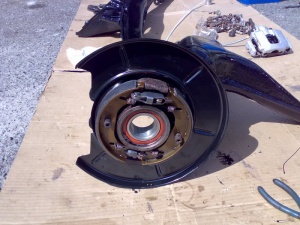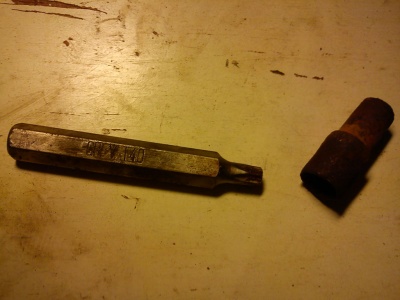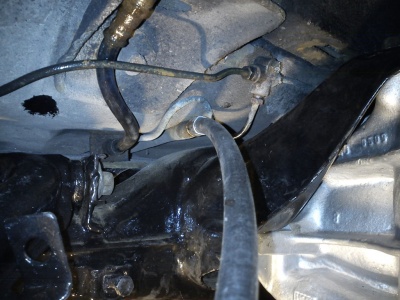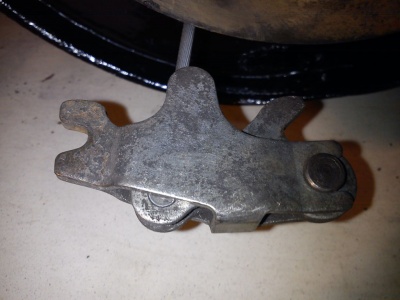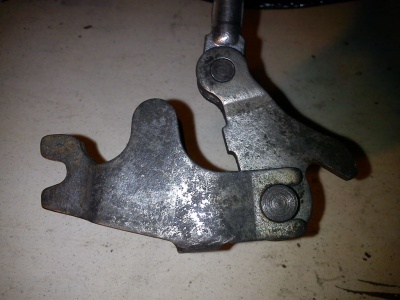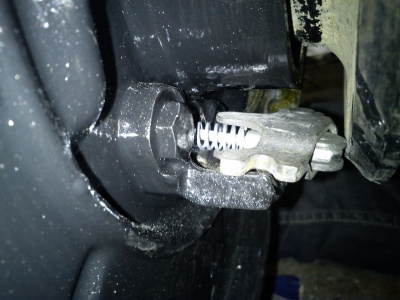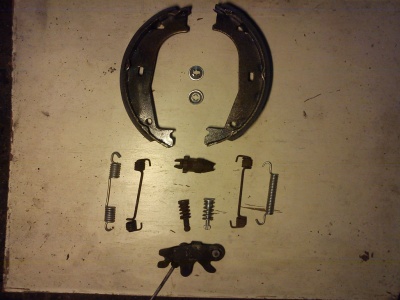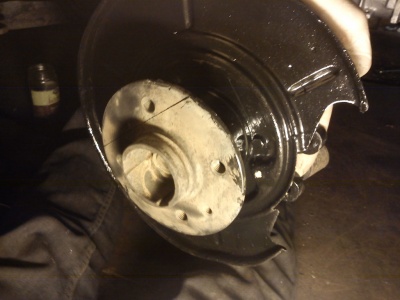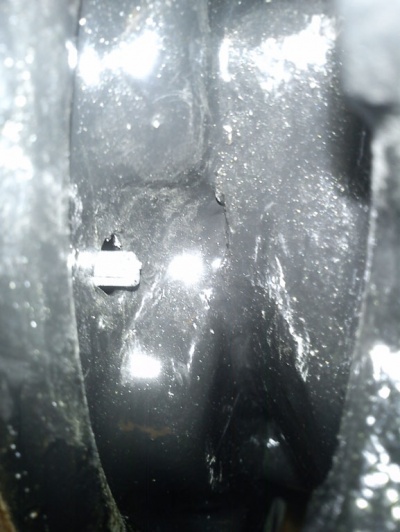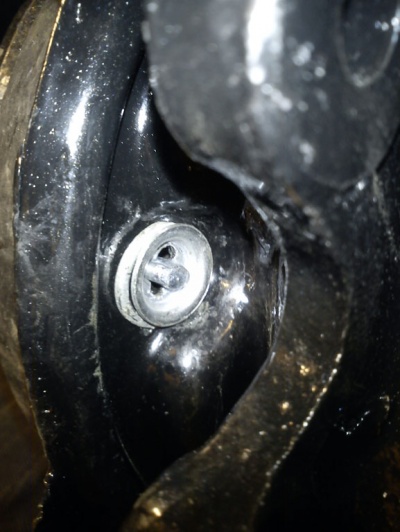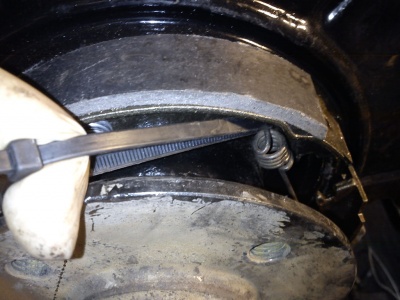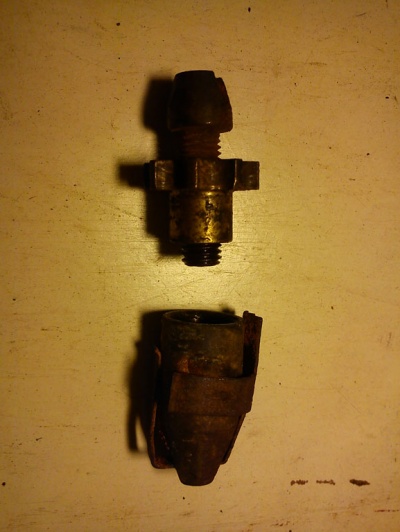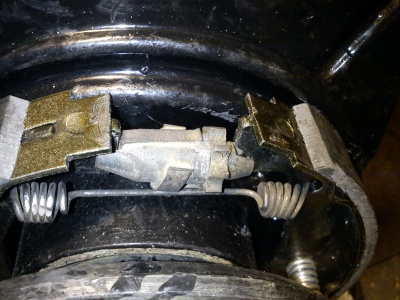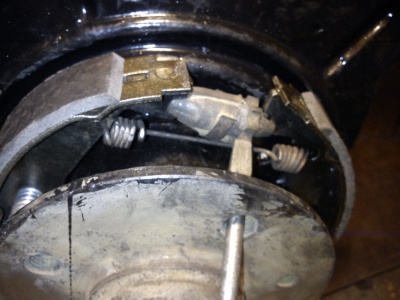Handbrake
Whether you're parking the car or sliding it round a corner, the Handbrake is a handy feature fitted to every E30. Here's everything you need to know about that handle between the front seats.
Contents
Overview
All E30s are fitted with a handbrake mechanism, which pulls brake shoes tight against the inner rim of a brake drum on each rear wheel. These shoes are cable-operated via the handbrake lever. For lesser E30s with rear drum brakes, the handbrake is self-regulating. For cars with disc brakes, the shoes operate inside the bell of the disc, and require periodic adjustment.
After 20+ years on the road, the vast majority of E30s will be running with gunked up mechanisms on overstretched cables with at least one shoe barely clinging on to life. So that you can excel at handbrake turns in the supermarket car park, we'll talk you through stripping down and overhauling your handbrake to get it working the way BMW intended.
Overhauling
For this tutorial, we're going to assume that your E30 has rear disc brakes. If it doesn't you can still follow the majority of these steps for replacing your handbrake parts, but it's worth considering a rear disc brake conversion.
With that in mind, follow this guide for:
- Replacing handbrake cable
- Replacing rear shoes
- Adjusting shoes
Parts
To overhaul the handbrake, you'll want the following parts:
- 2 handcables
- 2 sets of rear brake shoes for Z3
- Rear brake shoe set (pins and springs)
- 2 lockheed washers (optional)
Replacing Cables
The cables run under from the handbrake lever to the rear axle, carried in special tubes that run the length of the transmission tunnel. If your car is a typical E30 then those cables will be the originals. The inners will be stretched, and the plastic outers will be torn and cracked, leading to reduced cable strength. The first part of an overhaul will be getting these cables off.
I warn you know - this is a hell of a job. At the wheel end you'll need the calipers and discs off to start, and for the lever end you'll need to undo the nuts holding the cables in their sleeves, which hide under the handbrake lever gaiter. Feel free to undo the two ends in your own time.
But it's the middle part that's the horror story. The cables run in metal sleeves above the prop shaft, and come out of these sleeves just above the rear beam. At this point, they develop a thick rubber outer sleeve, much like a bicycle brake cable, before disappearing into the wheel hub.
As you can see in the lower half of this pic, the ferrules will have rusted solid to their tubes. Lots and lots of penetrating oil will be needed here, as well as a handy Stilson wrench to grip the outer sleeve to twist it free.
If time is not on your side, you can try this. Slice through the cable; hacksaw, angle grinder or Dremel - the choice is yours, just get those cables cut. Then undo the nut at the lever and pull the inner handbrake cable out via the cabin.
Get back under the car, and use some pliers to twist out as much of the outer metal from the tubes as you can, and you'll be left with the solid metal ferrule rusted to the tube.
At this point, if you wrench too hard you'll rip the tube away from the car - it has happened. Instead of that, try hammering a Torx T40 bit into the remnants of the ferrule. With luck, it'll bite into the inner hole, allowing you to use your wrench to twist the ferrule out of the sleeve. Be patient, take your time, and rock the ferrule back and forth. If you can, get a blowtorch on it too. Eventually it'll come out, like so:
You can now slide your new handbrake cables into the tubes, making sure to liberally coat the new ferrules in copper grease before slotting them into the tubes. Go to the cabin and feed the inners into their slots in the handbrake lever, but don't tighten the nut yet.
Now move to the axle end. If you've done as you're told you'll already have the caliper and disc off, so you'll see the existing mechanism in all its glory. To make things quick, simply undo the two allen bolts holding the shoes in place, and tug everything off the backplate of the hub. Ultimately, you'll find that you're left with this funny latch mechanism connected to the handbrake cable:
Pull it out, with the handbrake inner too. Note where the cable went through the hub; there'll be the corresponding stuff of outer cable on the back of the hub. To get this out, you'll need a hammer and a suitable drift, to smack the outer cable out of the hub. I used an 8mm allen key as a drift. Once it's out, feed your new cable through the hole with more copper grease for the ferrule, and you'll be left with something like this:
You can now remove the handbrake latch mechanism from the old cable and attach it to the new. As a guide, it goes together like this:
Tuck this back behind the hub, and we'll move on to fitting the handbrake shoes.
Handbrake
The handbrake uses a pair of shoes, which are a pair of curves covered in a friction material. They're held in place by two pins that push and twist into the backplate, and are held there by springs. The two handbrakes are then pulled together with another pair of springs to pull them in and away from the inside of the brake disc. The latch mechanism you attached to your new cable is what pulls them apart, while their top edges are separated by the adjuster; a toothed wheel that allows you to adjust how far apart the shoes are. All these parts are outlined below - we've combined the old and new parts so that you can see the differences:
One of the main issues with the shoes is that the backplates rust out. This means that the pins are unsecured, and the springs then pull the shoes out of position. In a worst case scenario (like mine) the shoes will twist and grind against the inside of the disc, destroying themselves and the disc at the same time. In this pic, you can see the white hole in the black backplate where the pin usually goes:
The official repair is to replace the backplates. Not only are these very expensive (and hard to find) from BMW, but you need the hubs pulled out which ultimately destroys the bearings too. That is expensive both in time and money, but there is a simpler solution - the backplate repair.
Backplate Repair
In the centre of our parts are two lockheed washers. These funny metal bowls look like top hats, but with a letterbox hole cut through the middle. These are used to secure the shoe pins on lesser cars - I've stolen them from a Daewoo Tico. Depending on where you get them, you may need to widen the hole up with a file, but that's a minute's job at most.
What we need to is to poke the shoe pin through the wheel backplate, like so:
Then, by offering the washer up, we can push the pin through the hole, into the washer, and with a 90-degree twist, secure the pin and the shoe for another few years. I've added a 12mm aluminium washer here for strength, but it's not essential.
And from the other side, you can see how the shoe is secured by the pin and spring.
Shoes
As you can see above, the shoes are held in place by twist-pins and springs. Pay attention to which way round your shoes go - there is an Up and Down for these shoes, and it's dependent on how they mate up to the cable and adjuster mechanisms.
As you hold the shoe in your hand, pay attention to the inner grooves at the top and bottom. These are used to hold the mechanisms in place, and the wider groove goes at the bottom to the cable mechanism. As you secure the shoes, make sure you get the cable latch mechanism into those grooves - trying to prise them in later will be a real pain in the arse. If you get them fitted right, they should mate up to the mechanism like so:
Once both shoes are in place, you need to link them together with the retaining springs. If you were annoyed by removing the handbrake cables, this will drive you over the edge, as the springs have very little stretch and are extremely reluctant to fit into the slots on the shoes.
To make it easier, we recommend using a cable tie. By looping it over one end of the spring, you can pull it out to the opposite shoe and then push its tip into the slot. When done, cut away the cable tie.
Eventually you'll have both shoes pinned to the backplate and well-sprung. Almost there.
Adjuster
This curious little bullet is the handbrake adjuster. It comes in three parts; a body, a wheel and a screwhead. The first two just push together, and will fall apart easily if nothing is there to squeeze them together. The screwhead screws into the wheel, and the idea is that by turning the wheel you drive the screwhead in or out.
To fit it to your shoes, you're going to have to play around with the screwhead until you can squeeze the entire adjuster between the top of the shoes. It should nestle in place like so:
Now go back to the cabin and tighten the 10mm nut on the handbrake cable. Your aim is just to take up the slack, NOT to tighten the cable so much it makes the shoes move. Just get the nut on the cable for now.
At this point, you need to go back to the brakes, and wind the adjuster wheel to push the screwhead out, but only enough to brush the inside of the brake disc. The slow but easy way is to continuously offer up the brake disc so it will just fit over the shoes. If it won't fit, unwind the wheel five "clicks" and try again. If it fits easily, wind it forward three clicks and try again. Once you're sure the brake disc fits snugly, unwind the wheel four clicks and refit the brake disc and calipers.
Once that's done, go back to the cabin and raise the handbrake lever and tighten the nut. Your aim is make the handbrake impossible to lift over 5-6 clicks. Lift the lever, tighten the nut, then drop the handbrake and go back to the wheel to make sure it spins freely and that you haven't over-tightened. Once you're satisfied, refit the handbrake gaiter, put the wheels on, lower the car to the ground and take it for a test drive.
Adjustment
Over time, the shoes will wear and you'll need to adjust them to make sure they bite properly. So that you don't have to strip everything down again, BMW designed things so that you can spin the adjuster wheel through the brake disc and hub. Here's a picture to give you an idea (disc removed, obviously):
To do that, you'll need the wheel off the car. So follow this procedure to adjust each wheel in turn.
Chock the front wheels, lift the car and take the handbrake off. Then remove the handbrake gaiter and slacken the cable by undoing the nuts on the threaded rod.
Now remove one wheel, and rotate the disc until a hole is at the 12 o'clock position and look in with a torch. When you see the cog, push it round with a small flathead screwdriver. Adjust the top until the brake locks up, and then back it off a bit. Repeat on the other side.
After putting the wheels back on, tighten the nuts on the handbrake threaded rod to take up the slack in the cables, but no more than that. You are aiming for full handbrake operation at 5 clicks, or whatever feels right for you. If you have more handbrake travel than 5 clicks, go back and readjust the brake at the wheel again.
